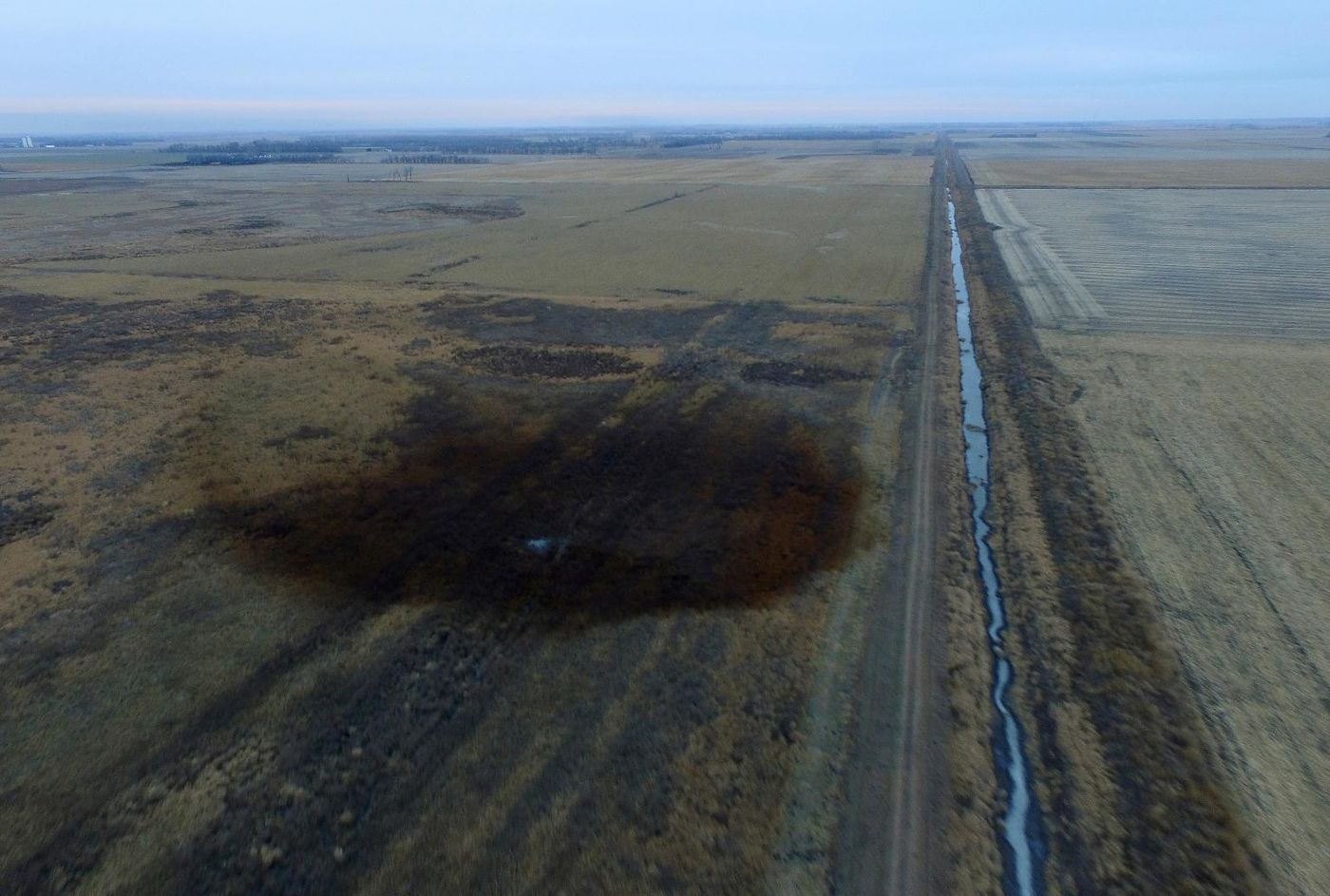210,000 gallons leak from Keystone pipeline
TransCanada Corp’s Keystone pipeline leaked an estimated 210,000 gallons of oil in north-eastern South Dakota on Thursday. The leak, found three miles southeast of the town of Amherst, is the biggest yet for the pipeline in South Dakota. Its cause is yet to be determined.
TransCanada said in a statement that crews shut down the pipeline and activated emergency response procedures after a drop in pressure was detected resulting from the leak south of a pump station in Marshall County.
Though officials think that the public drinking supply was spared from the oil, Brian Walsh, an environmental scientist manager at the South Dakota Department of Environment and Natural Resources, stated: “Ultimately, the cleanup responsibility lies with TransCanada, and they’ll have to clean it up in compliance with our state regulations,” Walsh said.
TransCanada reported that that pipeline was shut down immediately after the irregularity was discovered and that the company is working with state and federal agencies to preserve the safety of the public and environment. The company has not released a timeline for when it will be reopening the pipeline.
"EPA is aware of the spill and is receiving periodic updates from the state of South Dakota, which is overseeing response activity at the spill site," said a spokesman from the agency.
Part of a 2,687-mile system, the Keystone Pipeline is the sister pipeline to that Keystone XL pipeline which made so much noise with activists. The pipeline is capable of transporting 600,000 barrels (23 million gallons) a day from Alberta, Canada, to refineries in Illinois and Oklahoma. To get there, it crosses through the eastern Dakotas, Nebraska, Kansas, and Missouri.
This is not the first leak that the Keystone pipeline has seen in South Dakota. In April of 2016, roughly 17,000 gallons of oil spilled on to private land from a leak that was supposedly an “anomaly” on a weld on the pipeline.
Sources: The Guardian, CNN









